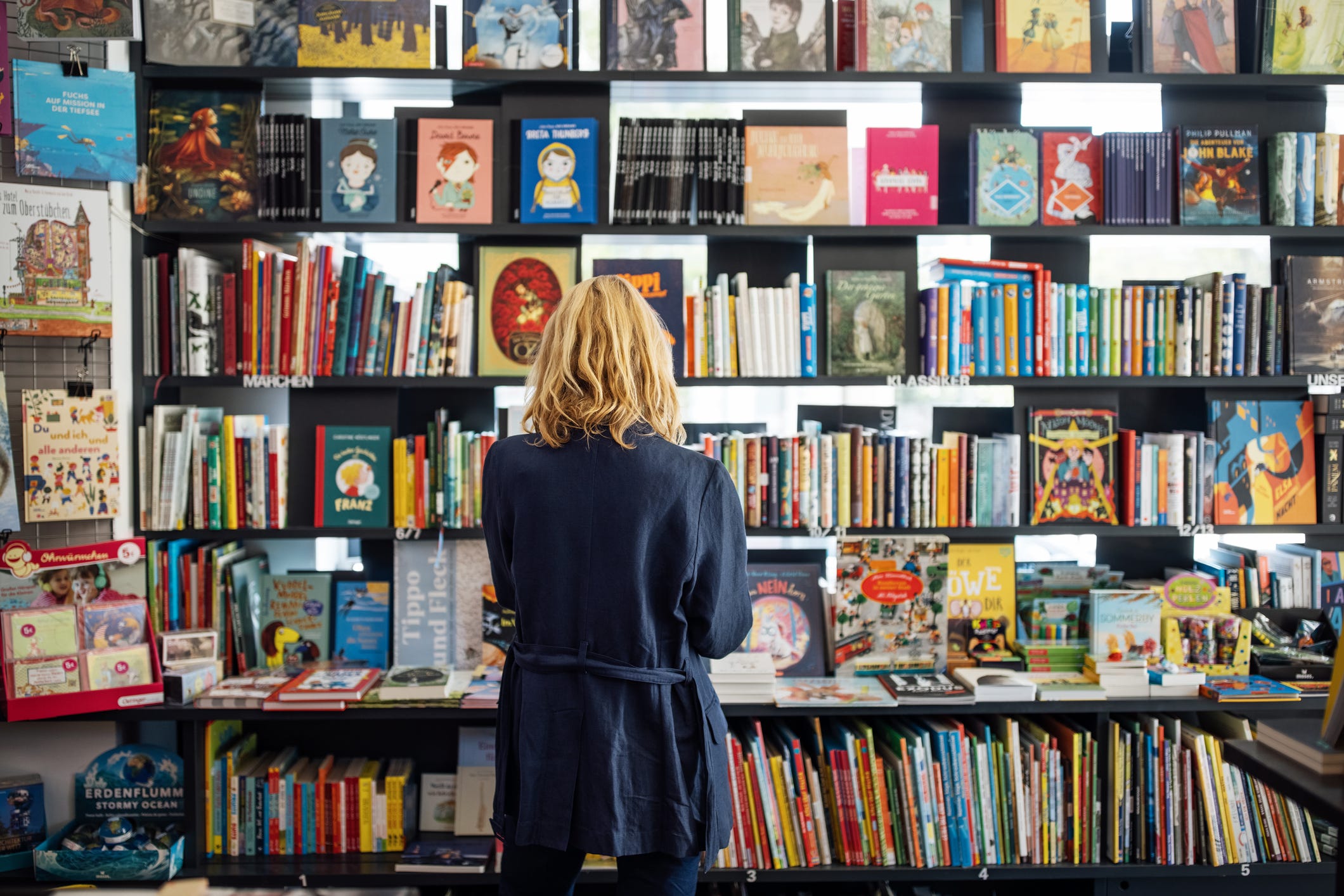|
 |
The Simple Key to Breakthrough Innovation
Being able to put ideas together in new and unexpected ways is the most common way to break new ground
Few ideals are more in vogue today than “innovation.” Hundreds of books, innumerable workshops and countless consultants are prepared to show businesses, governments and organizations of all types “how to innovate.” Yet history indicates that the vast majority of breakthroughs come from one very simple idea: combining two things that no one has previously connected.
I have been studying businesses and large institutions since I was 12, in 1963. In seeking to understand creativity and the world around me, I acquired more than 70,000 books—but I found that few writers seemed to really understand creativity, especially in business. There is one book, released in 2011, that I think gets it right, though. In “The Innovator’s DNA: Mastering the Five Skills of Disruptive Innovators,” Jeff Dyer, Hal Gregersen and Clayton Christensen interview the greatest innovators of our era and find that these people shared a particular skill: “associating,” or making connections across different disciplines or questions.
Examples of this abound in virtually every field—with many of them revolutionizing daily life as we know it. Lee Iacocca improved a troubled Chrysler Corp. by combining the passenger car with the full-size van, both pervasive on American streets at the time, into the minivan. John Mackey and his colleagues combined the embryonic idea of the health foods store with the retail chain-building “technology” pioneered by the Great Atlantic and Pacific Tea Company in the 19th century to create Whole Foods Market. Computer printer makers learned to make their money from replacement ink cartridges, adapting an idea pioneered by King C. Gillette and his disposable razor blades over a century ago.
Television shows, movies, books and music are often described as hybrids: George Gershwin combined the symphony with jazz; the TV show “Scandal” was a hybrid of “The West Wing” and “The Sopranos.” Steve Jobs blended his belief in the future of personal computers with the mouse and graphical user interface that he witnessed at Xerox PARC, where energies were focused on the corporate market. My first major startup, Bookstop, took the idea of Toys “R” Us—a wide selection and low prices in a single merchandise category—and applied it to books. Home Depot, Best Buy and others did the same.
Most of these things seem obvious in retrospect, but usually only one person made the initial connection, even if the two things being combined were known to everyone. There is always a “first,” from seemingly small ideas, like adding drink cup holders to movie theater seats, to stunning developments such as Elon Musk’s application of recycling to rockets.
The idea of combining things is not new. In 1964, Arthur Koestler’s book “The Act of Creation” praised the concept of “bisociation.” Scientist Stephen Jay Gould believed that connecting the seemingly unconnected was the key to genius. Famed graphic designer Paula Scher likened creativity to a slot machine linking unexpected cherries and oranges. Albert Einstein said, “Combinatory play seems to be the essential feature in productive thought.” More recently, Steve Jobs remarked, “Creativity is just connecting things.” So if the concept of combination isn’t a new one, then how do we actually harness it to come up with innovative ideas and solutions to our problems?
Assess Your Creativity
The key here is to “see the unseen,” to notice connections that others have not made. This requires creativity on your part. The cornerstone of creativity—and in fact, of all learning—is curiosity. How curious are you? That might seem like a strange question. While people continually measure themselves against others based on attractiveness, wealth, belongings and intelligence, I don’t think people give much thought to how their curiosity compares to others. Occasionally, especially in biographies, a person will be called “curious about everything,” but almost never “incurious.”
But we are all born curious—just watch any toddler, kitten or puppy. Curiosity about the world around us is the most natural of tendencies. Yet many adults are not in fact very curious. Somehow, as we age and life throws curves at us, we become hardened, often even cynical. (Note that most cats and dogs never lose their curiosity.)
You can test your level of curiosity by asking yourself questions like these:
How many times a week—or day—do I look something up on Wikipedia? As often as I search on Amazon, Etsy or eBay?
If a friend tells me about a book, movie or musician they like, how many follow-up questions do I ask? Do I probe more deeply: Why do you like it? What makes it meaningful to you?
Say I meet a stranger on an airplane. Do I ask questions about their life? Where they are coming from, where they are headed, what they do for a living?
On that airplane, do I curl up in my own world, or do I sit by the window and marvel at the Earth below, the ever-changing patterns of land use, overviews of cities in the daytime, or the lights and roads at night?
When I hear about a person or place in the news, do I try to learn more?
When I read something online with links in it, do I click on the links to dig further into the story?
Do I enjoy people-watching? At an airport, shopping mall or museum, do I sit and observe people, what they do, where they go and why? How do they differ by race, gender, age, income, family size?
Perhaps most importantly, what are my answers to all of the above questions when the topic, industry or item is something I care nothing about? Am I willing—or even eager—to step outside my life, my comfort zone? Am I open to discovery?
I believe the ideal mental state is what I call “a childlike state of wonder.” Can we get back to that feeling—where we’re in awe of everything around us? Every tree in the forest tells us how long it has been there, how many seasons it has seen, how persistent it is. Every old building in a city has walls that could tell endless stories, stories of joy and of sadness. Every airplane ride is a miracle, shooting through space in ways only dreamed of by most of the humans in history.
Curiosity is a matter of habit. Curiosity improves with practice. It builds on itself. Just as our muscles need exercise, our brains need workouts. And if we give our brains the exercise they need, it becomes easier to make connections between different fields and ideas.
Ask Questions—and Learn to ‘Graze’
The next step is developing the art of questioning. In his book “Men, Ideas, and Politics,” the great leadership thinker Peter Drucker said, “The most serious mistakes are not being made as a result of wrong answers. The truly dangerous thing is asking the wrong questions.” But the more questions you ask, the more likely you will ask the “right” ones. Toyota, for one, focused on its famous “five whys.” Our production numbers are down. Why? The production line broke down. Why? The part broke. Why? We had not maintained it well. Why? The maintenance people were not well-trained. Why? Toyota understood that asking questions about its processes—including its failures—was key to eliminating production hiccups and keeping the business running smoothly.
A critical corollary to questioning is the feedback loop. Before you ask a question, ask yourself what you expect the answer will be. Then, when you hear the answer, did you get it wrong or right? How far off were you? Why were you wrong (or right)? Over time, you’ll strengthen your brain and become more accurate. You’ll be led to thoughts you’ve never had before, inching ever closer to creativity and innovation.
Questioning should be accompanied by “grazing.” This seems to be a lost art, so if you practice it, you’ll stand out from the crowd. To understand this concept, step back in time 60 years, before we had the conveniences of modern technology:
When you needed to know the definition of a word, you looked it up in a dictionary. Along the way, you might learn four or five other new words as you paged through the book.
Likewise, to look up a famous person, a place or type of bird, you would reach for the family encyclopedia, and usually get sidetracked by other entries, especially the entries before and after what you were looking for.
When you wanted to know the score of last night’s ballgame, or the price of a stock you owned, you paged through the newspaper, and stumbled across things you did not think you would be interested in.
If you wanted to get the new Beatles album, you went to a record store and could not help but notice dozens of other artists and new music.
And when you were driving somewhere, you pulled out a paper map, unfolded it, and became aware of all the parks and landmarks along the route.
Today’s young people have rarely, if ever, experienced these things—coming in contact with opportunities and ideas they haven’t specifically sought out and expanding their minds in the process. We have become so focused on the task at hand—in such a hurry, trying to be efficient—that our exploratory and discovery skills have atrophied. We tend to be single-mindedly focused on our destination, but will Google Maps indicate the most scenic route, or the one with the best architecture?
Even the occasional use of a paper map, a dictionary, an encyclopedia, a field guide to nature or a printed newspaper will make you engage with things that surprise you, broadening your mind and thus your ability to be creative. Go to a big newsstand like those at Barnes & Noble and buy 10 magazines on subjects you would never think about. Walk every aisle of a store you think you dislike but have never been in, or a store that is aimed at someone of a different age or gender or income group from you. Look at everything on the shelves and think about who might buy it and why, what purpose it will have, what need or want it will fulfill.
Such grazing broadens one’s array of interests. Since new ideas, products, services and processes come from combining two seemingly unrelated things, the more different ways of thinking at your disposal, the more new ideas you’ll form. If you only know two subjects, there are four combinations. If you study four fields, you’ll have 16 possibilities. If you have some idea of how a marketing person thinks, how a psychologist would see the issue, how a biologist would see it, how an economist would see it, how a politician would see it—five lenses—you’re up to 25. Your ability to see the unseen grows geometrically.
Furthermore, you should learn the history behind what you study. Often, ideas from 50 or 100 years ago have been abandoned, sitting on dusty shelves waiting to be rediscovered and tried again. In the 1930s, Sears, Roebuck and Co.’s Robert Wood led the mail order company into the brick-and-mortar store business. What might Amazon learn from studying his thinking, his challenges, his results? Today, grocery delivery is all the rage, but when I was a child, the bread truck and the milkman came around each week. How does grocery delivery differ from the bread or milk delivery of the past?
As you practice these steps, continually ask yourself, “What is the same between these two things and what is different?” And for each idea and thing you see, ask these questions:
What is this a part of? What is the bigger idea here?
What are the parts of this? What are its components? How do they all fit together?
For example, what do eBay, Uber and Airbnb all have in common? Might it be that they take advantage of excess capacity, of underutilized resources? Which leads me to ask, “Might there be a way to make use of our thousands of churches during the week? Might there be a way to fill up or better utilize restaurants from 2-5 p.m., between lunch and dinner?” Questions beget questions, which beget innovative answers.
In my experience with these methods, I find that time and patience are required. Don’t try to rush to judgment on an idea, pro or con. Take time to let ideas mix in your subconscious. The ideal situation is to enjoy this process, not to end up pounding your head against the wall, asking yourself, “Why can’t I see what I am looking for?”
And in all your thinking, remember that the answers are usually not where you are looking for them. That is where everyone else is looking. Creativity and innovation are about seeing what others do not, about studying what others are not, finding the things others are not talking about.
Perhaps your imagination about possibilities will be triggered by a few of the many business ideas that have floated through my mind. Is there a way, say, to connect the Costco approach to retailing—inexpensive, functional facilities and minimal overhead and bureaucracy combined with highly paid workers—to K-12 education? Or given the continuing boom in pet ownership, is there an opportunity to open roadside hotels catering to that market? If you want to create a new future, for yourself and for the world, be curious about as many things as possible, stop and think, and make those connections that no one else has (yet) discovered. The answers are often right in front of you.
You’re currently a free subscriber to Discourse .


